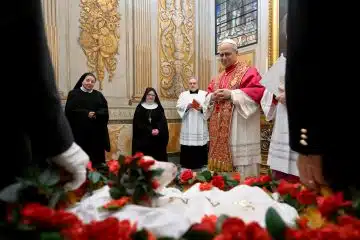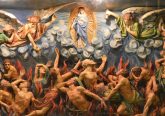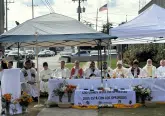Literal or Symbolic?
QUESTION OF FAITH
Literal or Symbolic?
How do we know which parts of the Bible are to be taken literally and which symbolically?
A difficult aspect of interpreting the Bible is whether certain verses should be taken literally or figuratively. For instance, the first two chapters of Genesis each contain creation stories. In the first chapter, God created humans after he finished creating the other animals. In the second chapter, God created man first.
Which is true? What are we to believe?
SCIENCE OF SCRIPTURE
Prior to the 18th Century, most Christians interpreted the Bible literally. But as the scientific study of Scripture advanced, some questioned the literal interpretation, seeing that there were internal inconsistencies in the Scriptures. Though many Christians interpret the Bible literally, Catholics are not “Biblical fundamentalists.” The Bible is inerrant in faith and morals, but not necessarily regarding history or science.
The Catholic Church is open to the fruits of modern, scientific study of the Scripture. This has resulted in acknowledging, for instance, that a Catholic need not believe Moses wrote the Pentateuch (the first five books of the Bible) nor to take as literal every detail of the creation stories in Genesis.
SENSES OF SCRIPTURE
In the 3rd Century, the theologian Origen, often thought of as the first Biblical scholar, developed a way of understanding the Scriptures. He perceived that not all parts of the Bible should be understood the same way; he distinguished between various “senses” of Scripture, which can be divided between literal and spiritual approaches.
The first sense is the literal, upon which the others are based. Most of Scripture can be understood through the literal sense, but the other senses of Scripture—called the spiritual senses—can be useful, and even essential, for a proper reading of certain verses.
SPIRITUAL SENSES
These spiritual senses can be differentiated into the moral, anagogical and allegorical. The moral sense encourages readers to apply Scripture to their ethical decisions: for instance, the moral lessons found in the Book of Job. The anagogical sense promotes Scripture’s ability to point to the afterlife: as in the Israelites crossing the Red Sea as a symbol for entering heaven. The allegorical sense looks beyond the most obvious reading to illuminate some greater spiritual truth: such as Abraham’s sacrifice (Gen. 22: 1-19) being a prefigurement of Jesus’s sacrifice. When commanded by the Lord, Abraham, in place of his son Isaac, sacrificed a ram that he found caught in a thicket. The thicket is suggestive of the Cross, and the ram, which is sacrificed, is analogous to Jesus.
DIFFERING INTERPRETATIONS
In determining which passages should be viewed literally and which symbolically, Catholic and Protestant interpretations sometimes differ. For example, Catholics take the Bread of Life Discourse in John 6 as literal: Jesus proclaims Himself as the “true bread from heaven” (suggestive of the Eucharist). Most Protestants perceive this as a statement that need not be understood literally.
In other cases, the respective interpretations match. Catholics, as well as many Protestants, believe that the first two chapters of Genesis can be reconciled if they are not seen as a chronological and historical narrative. Instead, when Genesis’ genre is taken into account, its early chapters can be seen as expressing spiritual truths—which are true, but not in the literalistic sense. The reader should approach the Scriptures with an openness to the ways that God wishes to communicate since the Bible is “living and effective” (Heb. 4:12), whether, as certain passages may suggest, it is read literally or symbolically.
 Father David Endres is associate professor of Church history and historical theology at Mount St. Mary’s Seminary & School of Theology
Father David Endres is associate professor of Church history and historical theology at Mount St. Mary’s Seminary & School of Theology
This article appeared in the September 2022 edition of The Catholic Telegraph Magazine. For your complimentary subscription, click here.













